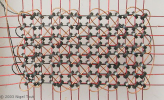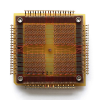RackAddict
Previous handle "Djenter"
I was wondering if somebody can answer me what on the surface may appear to be a very basic computer science question.
I have searched endlessly for what some think is an easy answer to this but I can assure you I have ended up at many dead ends trying to find this fundamental answer upon which all computer science lies, and that is, how exactly is it that an on or off impulse converts to a 1 or 0 that is then as binary math from that point forward (and yes we already do understand the binary part representing the on/off part. But what is the connected means? The channel?) How does an on impulse 'flick the switch' to a zero? And how does the off no impulse even 'flick' it if there is no impulse to do the flicking?
This point of conversion is what this YouTube series on computer science fails to explain. I have also looked into manuals and references at the computer science level and there was no answers.
I've even asked computer techs in computer shops, they dont know, and even computer science graduates seem baffled... even they don't know.
Yes, we know that an off is represented by a 0 and an on is represented by a 1. But what exactly is that representation at the level of the logic gate? Is there some sort of imprint that is connected on some sort of microscopic physical switch? How does the off 'switch to a 0 and the on switch to a 1? Is it like a mini injection mould at the atomic level that connects a no impulse to a 0 and an impulse to a 1? And how does that happen? Can somebody maybe make a sketch?
Because so far I haven't found any explanation that makes any sense.
And what about the other way around by means of the binary control? How does a 0 become no impulse and a 1 become an impulse? How does it know 'how' to react whatever it is? The 1 or the 0 - how do they become that? or the on or the off to the 1 or the zero.
I have searched endlessly for what some think is an easy answer to this but I can assure you I have ended up at many dead ends trying to find this fundamental answer upon which all computer science lies, and that is, how exactly is it that an on or off impulse converts to a 1 or 0 that is then as binary math from that point forward (and yes we already do understand the binary part representing the on/off part. But what is the connected means? The channel?) How does an on impulse 'flick the switch' to a zero? And how does the off no impulse even 'flick' it if there is no impulse to do the flicking?
This point of conversion is what this YouTube series on computer science fails to explain. I have also looked into manuals and references at the computer science level and there was no answers.
I've even asked computer techs in computer shops, they dont know, and even computer science graduates seem baffled... even they don't know.
Yes, we know that an off is represented by a 0 and an on is represented by a 1. But what exactly is that representation at the level of the logic gate? Is there some sort of imprint that is connected on some sort of microscopic physical switch? How does the off 'switch to a 0 and the on switch to a 1? Is it like a mini injection mould at the atomic level that connects a no impulse to a 0 and an impulse to a 1? And how does that happen? Can somebody maybe make a sketch?
Because so far I haven't found any explanation that makes any sense.
And what about the other way around by means of the binary control? How does a 0 become no impulse and a 1 become an impulse? How does it know 'how' to react whatever it is? The 1 or the 0 - how do they become that? or the on or the off to the 1 or the zero.


